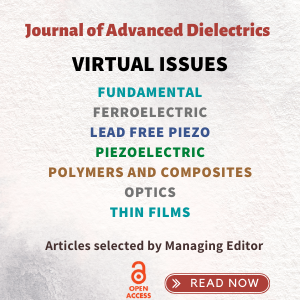System Upgrade on Tue, May 28th, 2024 at 2am (EDT)
Existing users will be able to log into the site and access content. However, E-commerce and registration of new users may not be available for up to 12 hours.For online purchase, please visit us again. Contact us at customercare@wspc.com for any enquiries.
Through millions of years' natural selection, sharkskin has developed into a kind of drag-reducing surface. This book shows how to investigate, model, fabricate and apply sharkskin's unique surface properties, creating a flexible platform for surface and materials engineers and scientists to readily adopt or adapt for their own bio-inspired materials.
Rather than inundate the reader with too many examples of materials inspired by nature, sharkskin has been chosen as the center-piece to illustrate accurate 3D digital modeling of surfaces, complete numerical simulation of micro flow field, different fabrication methods, and application to natural gas pipelining. This is a must-read for any researcher or engineer involved in bio-inspired surfaces and materials studies.
Sample Chapter(s)
Chapter 1: Self-Cleaning and Superhydrophobic Surfaces (635 KB)
Contents:
- Self-Cleaning and Superhydrophobic Surfaces (G G Li, Y T Zhao, L Zhang, B D Liu, Y Luo, B Y Li, E Y K Ng)
- Treatments and Constructing Digital Model of Biological Shark Skin/Shark (G G Li, Y T Zhao, L Zhang, Y Luo, E Y K Ng)
- Different Approaches to Manufacture Low Viscous Resistance Drag with Biomimetic Textures (J Wang, Y T Zhao, L Zhang, Y Luo, E Y K Ng)
- Different Characteristic Analysis of Drag-Reducing Surface with Biological Morphology (J Wang, Y T Zhao, L Zhang, Y Luo, E Y K Ng)
- Application of Biomimetic Shark Skin Surface in Natural Gas Pipelining (J Wang, Y T Zhao, L Zhang, Y Luo, E Y K Ng)
- Biomimetic Surfaces for Enhanced Dropwise Condensation Heat Transfer: Mimic Nature and Transcend Nature (Youmin Hou, Zuankai Wang, Shuhuai Yao)
- Large-Scale Fabrication of Biomimetic Drag-Reduction Surface via Bio-Replication of Shark Skin (Huawei Chen, Deyuan Zhang, Xin Zhang, Da Che)
- Study of Flow over Dimpled Cylinder for Drag Reduction (Tan S P, Koh J H and Ng Y K Eddie)
- Fluid Flow in Biomimetics Simulated Vessel Having a Grooved Surface: An Investigation of the Effect of Riblets in Drag Reduction (Guangming Hu)
- 3-D Modelling of Biological Systems for Biomimetics (Shujun Zhang, Donghui Chen, Kevin Hapeshi and Xu Zhang)
- Superhydrophobic Surfaces with Hierarchical Structures Inspired by Nature Leaves (Yuying Yan and Nan Gao)
- Bio-Inspired Macro-Morphologic Surface Modifications to Reduce Soil–Tool Adhesion (Peeyush Soni and Vilas M Salokhe)
- Application of Bio-Inspired Surfaces in Reducing Adhesion to the Surfaces of Soil-Engaging Components of Agricultural and Earth-Moving Machinery (Rashid Qaisrani and Li Jianqiao)
- Application of Bionic Technologies for Soil-Engaging Tillage Components in Northeast China (Ji-yu Sun, Zhi-jun Zhang, Jin Tong, and Hong-lei Jia)
Readership: Materials and Surface Engineers, bioengineers specialising in surfaces and materials, Oil and Gas pipeline engineers.

























